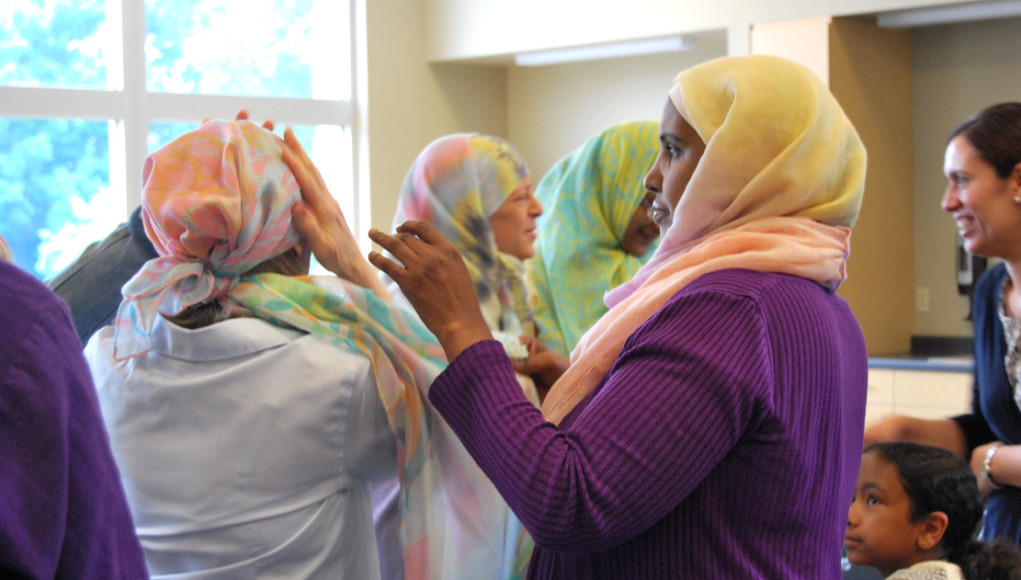On a casual Friday afternoon, women gathered at Sequoya Library for what was to become an eye-opening experience. Nasra Wehelie, an active leader in the Madison Muslim community and the development director for the Madison Urban Ministry (MUM), stood in the designated meeting room with an array of beautiful scarves (hijabs) and a warm smile. On that day, professional women from around Madison would get to experience the day in a headscarf.
In her second year of organizing, Wehelie put together an interfaith community event for Muslims and individuals of different faiths to come together and breakfast in the holy month of Ramadan. Last year, the participants (from all professional and religious backgrounds) came together to learn more about the month of fasting and to connect with the Muslim community here in Madison. This year, inspired by a dear friend, Wehelie decided to go with a unique theme.
The theme, “Hijab for a Day,” blossomed from a personal story. As a close friend of hers began battling cancer and going through chemotherapy, Wehelie visited her friend and gifted her a light scarf. One day, Becca, who was already wearing a hat to cover her balding head, wrapped the scarf Wehelie had given her around her head and shoulders due to the cold. At that moment, she felt what most Muslim women wearing the hijab felt. Becca wrote a blog about her experience, which sparked an idea. Wehelie and Becca saw this year’s Ramadan dinner as the perfect opportunity to incorporate the theme: Hijab for a Day.

Wearing hijab, otherwise known as a headscarf, is a religious practice observed by many Muslim women across the world. It is a component of a women’s modesty and is a personal choice (often misrepresented as something that is forced upon women). The hijab is a symbol of modesty and is often a part of an individual’s identity as a Muslim woman. As seen increasingly in the news, this outward symbol of Islam has been the object of various hate crimes across the US and Europe. From France banning the hijab to women being targeted (as seen in the horrific Chapel Hill Shooting), the climate for Muslim women wearing the hijab has taken a shift.
A group of 15 women showed up to the library and pushed back their hair to frame their face with a newly wrapped hijab. This hijab was gifted to the women to keep and a group of Muslim volunteers helped the women wrap the hijabs neatly. The instructions were simple: to be cognizant of how people treated them and how they viewed themselves. The group reconvened in the evening at the Fitchburg Senior Center to discuss their experiences as well as hear from a panel of three young American Muslim women who spoke on their experiences wearing the hijab.
The reflections ranged from individuals experiencing little difference in their daily lives to women who gained insight on their own personal outlook and self-esteem. From feeling more modest and feminine to being more in-tune with their surroundings, the simple of act of wearing the hijab altered (either slightly or vastly) the often-routine aspects of everyday life.
After the panel, food and stories were shared as the sun set on the horizon. The event, hosting around 90-100 people, allowed for individuals of all backgrounds to mingle and learn from one another. In a time where Muslims are often ostracized or even targeted in their communities, the dinner showcased a different reality where an array of people could come together and celebrate an often-misrepresented part of Islam. It is often said that in order to understand a person, you have to walk a mile in his or her shoes. This event was an opportunity for people to understand the experiences and struggles that a Muslim woman may face. It was an opportunity to not only walk a mile in her shoes, but to walk a mile in her scarf.




























